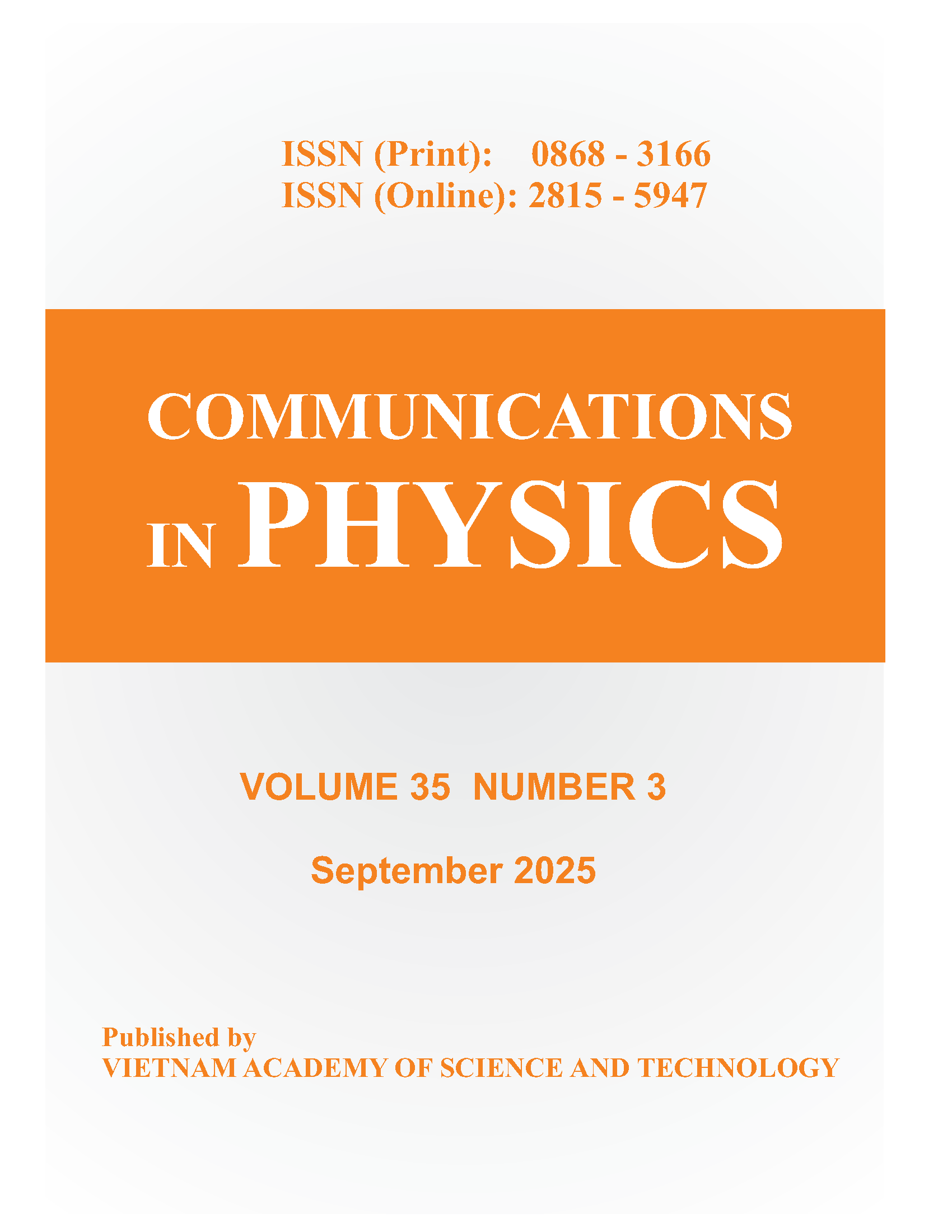Microfluidic Chip for Trapping Magnetic Nanoparticles and Heating in Terms of Biological Analysis
Author affiliations
DOI:
https://doi.org/10.15625/0868-3166/30/3/14834Keywords:
Microfluidic, planar-coil, magnetic nanoparticles, electromagnet, magnetic field calculation, Polydimethyl-siloxane,Abstract
In this study, we reported the results of the design and the fabrication a planar coil in copper (square, a = 10 mm, 15mm high, 90 turns), these planar coils were integrated in a microfluidic chip for trapping magnetic nanoparticles and local heating applications. A small thermocouple (type K, 1 mm tip size) was put directly on top of the micro-channel in poly(dimethyl-siloxane) in order to measure the temperature inside the channel during applying current. The design of planar coils was based on optimizing the results of the magnetic calculation. The most suitable value of the magnetic field generated by the coil was calculated by ANSYS® software corresponded to the different distances from the coil surface to the micro-channel bottom (magnetic field strength Hmax = 825 A/m). The magnetic filed and heating relationship was balanced in order to manipulating the trapping magnetic nanoparticles and heating process. This design of the microfluidic chip can be used to develop a complex microfluidic chip using magnetic nanoparticles.
Downloads
References
. Lee, H., et al., Integrated cell manipulation system—CMOS/microfluidic hybrid. Lab on a Chip, 2007. 7(3): p. 331-337.
. Pamme, N., Magnetism and microfluidics. Lab on a Chip, 2006. 6(1): p. 24-38.
. Gijs, M.A.M., F. Lacharme, and U. Lehmann, Microfluidic Applications of Magnetic Particles for Biological Analysis and Catalysis. Chemical Reviews, 2010. 110(3): p. 1518-1563.
. Luka, G., et al., Microfluidics Integrated Biosensors: A Leading Technology towards Lab-on-a-Chip and Sensing Applications. Sensors (Basel), 2015. 15(12): p. 30011-31.
. Herrmann, M., T. Veres, and M. Tabrizian, Enzymatically-generated fluorescent detection in micro-channels with internal magnetic mixing for the development of parallel microfluidic ELISA. Lab on a Chip, 2006. 6(4): p. 555-560.
. Holmes, D., et al., Bead-based immunoassays using a micro-chip flow cytometer. Lab on a Chip, 2007. 7(8): p. 1048-1056.
. Quanliang, C., H. Xiaotao, and L. Liang, Numerical analysis of magnetic nanoparticle transport in microfluidic systems under the influence of permanent magnets. Journal of Physics D: Applied Physics, 2012. 45(46): p. 465001.
. Shikida, M., et al., Agitation of magnetic beads by multi-layered flat coils. Sensors and Actuators B: Chemical, 2009. 137(2): p. 774-780.
. A. M. Gijs, M., Magnetic bead handling on-chip: new opportunities for analytical applications. Microfluidics and Nanofluidics, 2004. 1(1): p. 22-40.
. Lee, H., A.M. Purdon, and R.M. Westervelt, Manipulation of biological cells using a microelectromagnet matrix. Applied Physics Letters, 2004. 85(6): p. 1063-1065.
. Fulcrand, R., et al., On chip magnetic actuator for batch-mode dynamic manipulation of magnetic particles in compact lab-on-chip. Sensors and Actuators B: Chemical, 2011. 160(1): p. 1520-1528.
. Smistrup, K., et al., Magnetic separation in microfluidic systems using microfabricated electromagnets—experiments and simulations. Journal of Magnetism and Magnetic Materials, 2005. 293(1): p. 597-604.
. Issadore, D., et al., A microfluidic microprocessor: controlling biomimetic containers and cells using hybrid integrated circuit/microfluidic chips. Lab on a Chip, 2010. 10(21): p. 2937-2943.
. Bronzeau, S. and N. Pamme, Simultaneous bioassays in a microfluidic channel on plugs of different magnetic particles. Analytica Chimica Acta, 2008. 609(1): p. 105-112.
. Babikian, S., et al. Microfluidic thermal component for integrated microfluidic systems. in 2012 IEEE 62nd Electronic Components and Technology Conference. 2012.
. Peng, J., et al., Development of a microfluidic device with precise on-chip temperature control by integrated cooling and heating components for single cell-based analysis. International Journal of Heat and Mass Transfer, 2019. 130: p. 660-667.
. Richard P. Feynman, Robert B. Leighton, and M. Sands, The Feynman Lectures on Physics. New Millennium ed. Vol. II. 2010, New York: Basic Books. 566.
Downloads
Published
How to Cite
Issue
Section
License
Communications in Physics is licensed under a Creative Commons Attribution-ShareAlike 4.0 International License.
Copyright on any research article published in Communications in Physics is retained by the respective author(s), without restrictions. Authors grant VAST Journals System (VJS) a license to publish the article and identify itself as the original publisher. Upon author(s) by giving permission to Communications in Physics either via Communications in Physics portal or other channel to publish their research work in Communications in Physics agrees to all the terms and conditions of https://creativecommons.org/licenses/by-sa/4.0/ License and terms & condition set by VJS.












